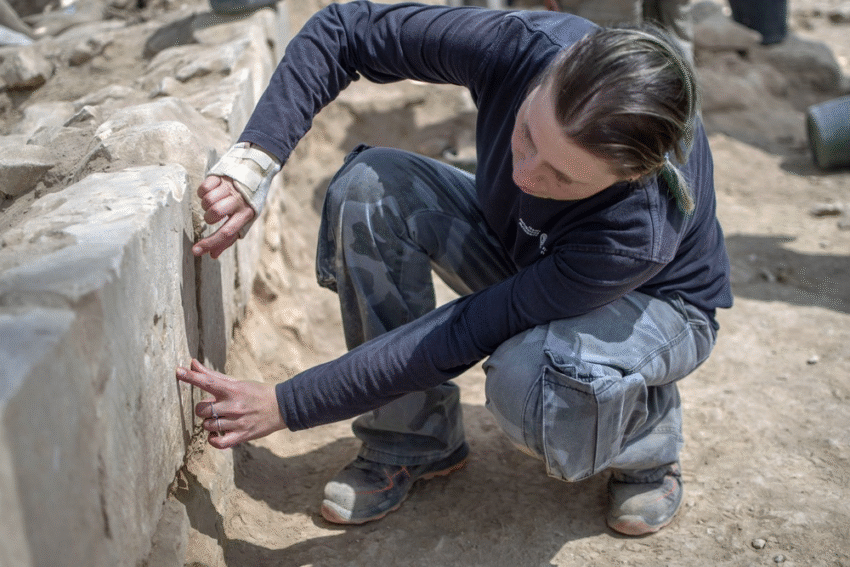Usually, when the word “pilgrim” is used, at least in the United States, visions are conjured of people with buckles on their shoes, white fluffy shirts, and black squarish hats. In Israel, however, pilgrims have been coming for thousands of years in all manner of styles. Most recently, a Byzantine-period Church used a wall around 1,500 years ago as a kind of message board for arriving pilgrims:
Excavation directors called the find “a greeting from Christian pilgrims” who arrived by ship to Gaza port, telling the story of settlement in the Northern Negev at the end of the Byzantine period (from approximately A.D. 395 — when the Roman Empire was split — to 1453) and in the beginning of the early Islamic period. source: https://www.ncronline.org/news/new-archaeological-discovery-israel-dubbed-greeting-christian-pilgrims-1500-years-ago
Many of these messages were in the form of drawings. The site continues:
“The drawings provide first-hand evidence about the ships they traveled in and the maritime world of that time,” said IAA Director Eli Escusido, describing the finds in southern Israel’s large desert as “surprising and intriguing.”
Excavation directors called the find “a greeting from Christian pilgrims” who arrived by ship to Gaza port, telling the story of settlement in the Northern Negev at the end of the Byzantine period (from approximately A.D. 395 — when the Roman Empire was split — to 1453) and in the beginning of the early Islamic period.
Modern Gaza is a contentious area, but it could be that finds like these are sent from the Kingdom to remind us that pilgrims and other religious believers were there on their way to various holy sites and churches well back into antiquity. Indeed, the article mentions the Bible overlaps with the region:
Gaza is mentioned in the Book of Judges in the Old Testament in the story of the Biblical Israelite judge Samson and Delilah, as well as in the New Testament in the story of the apostle Philip encountering an Ethiopian eunuch on the road from Jerusalem to Gaza.
Both of these stories overlap with the theme of “marriage problems”. In the first, Delilah tries to find various ways to kill Samson off, and in the second, well, there probably will not be any need for a marriage as eunuchs were generally excluded from marrying. Often they were found in some King’s court, given charge over harems.
Perhaps the heavenly “wedding feast” is closer than many think, and this is why this region is highlighted by being war-torn at the moment.

